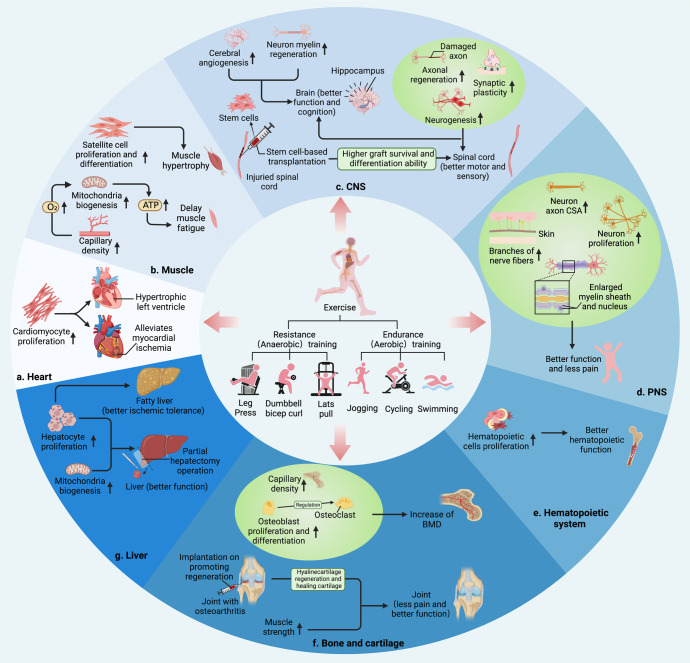Fig. 1.
Benefits of exercise-induced tissue regeneration. a Exercise induces physiological hypertrophy of left ventricle and reduction of myocardial infarction area by promoting the proliferation of cardiomyocytes. b Exercise induces muscle hypertrophy by promoting the proliferation of the satellite cells in both physiological and pathological conditions. Angiogenesis and mitochondrial biosynthesis are helpful in delaying muscle fatigue. c Exercise enhances hippocampal neurogenesis, myelin regeneration, axon regeneration, and cerebral angiogenesis to improve the motor, sensory, and cognitive functions. Exercise can also improve the sensory and motor functions after spinal cord injury and promote survival and differentiation of transplanted stem cells. d Exercise increases the branches of nerve fibers in the proximal skin, and promotes axon cross-sectional area (CSA), myelin sheath thickness, Schwann cell’s nucleus area and neurogenesis, so as to relieve the pain, improving sensation and motor function of patients with peripheral neuropathy. e Exercise can change the bone marrow microenvironment, promote the proliferation of hematopoietic stem and progenitor cells and the production of leukocytes. f Exercise regulates skeletal stem cell to differentiate into osteoblasts and chondrocytes, as well as bone angiogenesis, increasing bone mineral density (BMD). Besides, exercise induces the regeneration of post-traumatic cartilage lesions. Exercise is also considered as an effective adjuvant to stem cell-based therapy and the application of biomaterials or devices for cartilage regeneration. g Exercise promotes the regeneration ability of fatty liver, improving its tolerance to ischemia. Besides, exercise can restore liver function by promoting hepatocyte proliferation and mitochondrial biosynthesis in patients with partial hepatectomy. Created with BioRender

